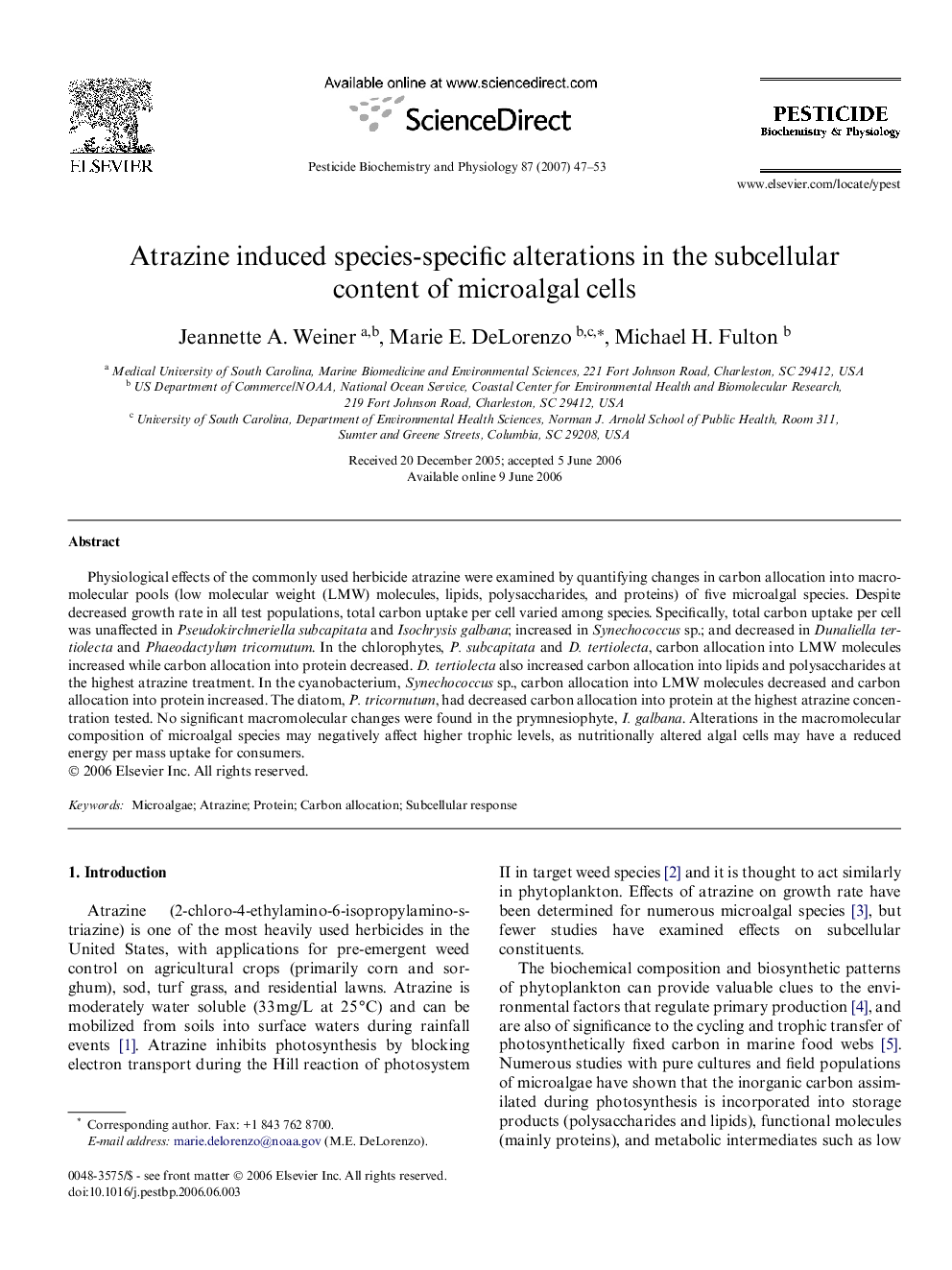| Article ID | Journal | Published Year | Pages | File Type |
|---|---|---|---|---|
| 2009988 | Pesticide Biochemistry and Physiology | 2007 | 7 Pages |
Physiological effects of the commonly used herbicide atrazine were examined by quantifying changes in carbon allocation into macromolecular pools (low molecular weight (LMW) molecules, lipids, polysaccharides, and proteins) of five microalgal species. Despite decreased growth rate in all test populations, total carbon uptake per cell varied among species. Specifically, total carbon uptake per cell was unaffected in Pseudokirchneriella subcapitata and Isochrysis galbana; increased in Synechococcus sp.; and decreased in Dunaliella tertiolecta and Phaeodactylum tricornutum. In the chlorophytes, P. subcapitata and D. tertiolecta, carbon allocation into LMW molecules increased while carbon allocation into protein decreased. D. tertiolecta also increased carbon allocation into lipids and polysaccharides at the highest atrazine treatment. In the cyanobacterium, Synechococcus sp., carbon allocation into LMW molecules decreased and carbon allocation into protein increased. The diatom, P. tricornutum, had decreased carbon allocation into protein at the highest atrazine concentration tested. No significant macromolecular changes were found in the prymnesiophyte, I. galbana. Alterations in the macromolecular composition of microalgal species may negatively affect higher trophic levels, as nutritionally altered algal cells may have a reduced energy per mass uptake for consumers.
